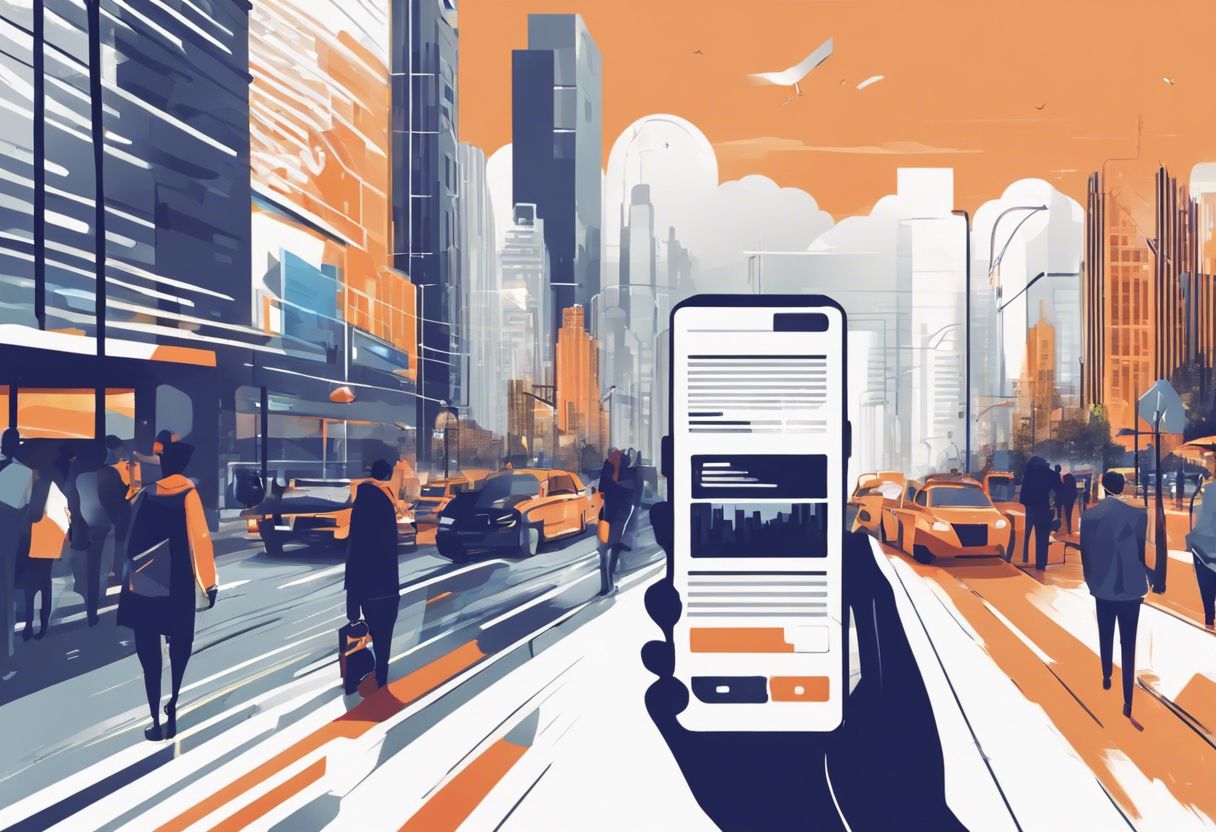Gen Z Appeal: Designing Websites For The Newest Audience

Hey business owners! Let’s talk about Gen Z, the young folks who are always online and know what they want from digital spaces. They’re called “zoomers” and they like fast websites that feel honest and include everyone.
For them, using a phone to go online is super common.
Zoomers love cool stories with pictures and videos on websites. They also enjoy it when a website feels like it’s just for them, with parts that change based on what they like. Plus, if their favorite internet stars suggest something to buy, more than half of zoomers might just buy it!
Remember, 45% of zoomers use Instagram to find new stuff to get. So having social media in your website is smart. Make sure everything looks great on phones because zoomers move quickly between apps and sites.
We’ll show you how to make websites zoomers will love by using big pictures that load fast and making everything easy to see on phones or tablets. Hang tight as we jump into making your website ready for the future with Gen Z!
Key Design Elements for Attracting Gen Z

When designing websites for Gen Z, it’s crucial to prioritize a mobile-first approach and responsive design. Visual storytelling and engaging content are also essential elements, along with personalization and social media integration to create an interactive digital experience that resonates with this audience.
Mobile-First Approach and Responsive Design

We know today’s young people are all about their phones. To win them over, we must focus on a mobile-first approach. This means we design our websites for small screens first. Then we make sure they also work well on bigger ones like tablets or computers.
Our goal is to give Gen Z the best experience no matter what device they use.
Our websites need to look good and work fast on mobile devices. High-quality images and videos play big roles here. They catch the eye and tell a story without needing lots of text.
But visuals aren’t enough if the site is slow or hard to get around—a quick loading time and easy navigation are key for keeping Gen Z interested in our sites.
Let’s create web designs that change smoothly from phone to computer screens, making it simple for users to shop, read, or interact with us at any moment, anywhere they go. This flexible style is called responsive design and it’s not just nice to have; it’s essential for connecting with digital natives who expect nothing less than a seamless browsing adventure on their favorite gadget—their smartphone.
Visual Storytelling and Engaging Content

As we put mobile-first design into action, let’s dive into the world of visual storytelling and engaging content. Creating a website for Gen Z means filling it with authentic stories and dynamic visuals.
They love real connections and this should shine through every image, video, and graphic we share.
Videos are key because they can tell a powerful story in just seconds. We use them to show off our brand’s personality and values which Gen Z cares about deeply. Infographics work great too! They turn hard facts into easy-to-understand pictures that grab attention fast.
Our goal is to build an online space where young people want to hang out because everything feels fresh and real. We talk about things they care about, like social issues, using visuals that take them on a journey.
Remembering nostalgia helps too; it makes our website feel like home.
Let’s make sure our site is not just seen but felt. Every photo, every clip must spark something in their hearts – that’s how we get Gen Z excited about what we do!
Personalization and Social Media Integration

Moving from crafting stories, we see how important it is to let Gen Z shape their own experiences on our websites. Personalization means giving them the power to customize what they see and interact with.
It’s about making sure that every visit feels like it’s made just for them. This could be through tailored product suggestions or content that matches their interests.
We also know that social media is where Generation Z lives and shares daily. Our sites must make it easy for them to connect and share content with their circles. Integrating social buttons, using influencer marketing wisely, or featuring user-generated content can help us do this well.
Doing so not only keeps them engaged but also turns our visitors into powerful advocates who spread the word about our brand naturally. By focusing on these strategies, we’re hitting two birds with one stone – creating a great user experience while boosting our reach through their networks.
Conclusion: Building a Future-Proof Website for Gen Z Users

In conclusion, designing websites for Gen Z requires a deep understanding of their digital preferences and behaviors. By prioritizing mobile-first design and creating authentic, visually appealing content, businesses can effectively engage this audience.
Integrating social media and personalization into website experiences is essential to capturing the attention of Gen Z users. To build a future-proof website for Gen Z, it’s crucial to stay updated on their latest preferences and adapt designs accordingly.
Engaging with Gen Z through interactive elements and inclusive design will be paramount in creating successful online experiences for this influential audience.

When designing websites for Gen Z, it’s crucial to understand their preferences and behaviors. Gen Z values visually appealing aesthetics, personalized experiences, and authentic, relatable content.
Additionally, 45% of Gen Z users actively seek out new products on Instagram, highlighting the importance of integrating social media platforms into website design. Furthermore, incorporating geolocation and time-saving features like auto-loading can significantly enhance the user experience for this audience.
Customizing content and creating attention-catching designs are essential aspects when targeting Gen Z. It’s also important to employ effective marketing strategies that resonate with this demographic in order to build a website that caters specifically to their needs and preferences.
By focusing on these key elements, businesses can create websites that not only attract but also effectively engage with the newest generation of consumers.
Explore our comprehensive guide on Local SEO Mastery to further enhance your website’s appeal to the digitally savvy Gen Z audience.
FAQs
1. What should I consider when designing a website for the Gen Z audience?
When designing for Gen Z, it’s important to prioritize mobile responsiveness, fast loading times, authentic content, and intuitive navigation.
2. Are there specific visual styles that appeal to the Gen Z audience?
Yes, Gen Z prefers clean and minimalist designs with vibrant colors, authentic images, and videos that tell a story or convey real experiences.
3. Should I incorporate social media elements into my website to attract the Gen Z audience?
Absolutely! Integrating social sharing buttons, user-generated content sections like reviews or testimonials, and interactive features can enhance engagement with the Gen Z audience.
4. How important is sustainability in website design when targeting the Gen Z demographic?
Sustainability is very important to Gen Z; they value eco-friendly practices and ethical values so incorporating sustainable design elements and showcasing environmental initiatives can appeal to them.


